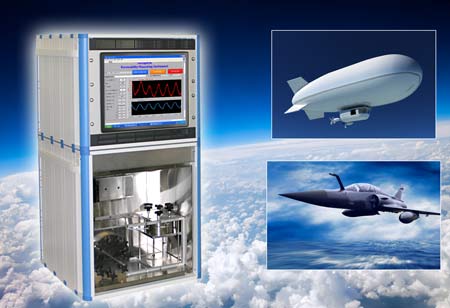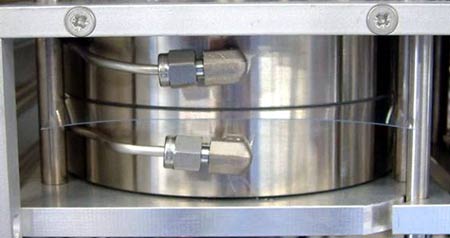

 One of the critical aspects of the design of lighter than air ships is that they remain lighter than air. This necessitates the retention of the helium or hydrogen used to provide lift.
One of the critical aspects of the design of lighter than air ships is that they remain lighter than air. This necessitates the retention of the helium or hydrogen used to provide lift.
Envelope textiles and materials are not impervious to gases - helium will diffuse from the envelope and water vapour and other atmospheric gases will infiltrate into the envelope at rates determined by the difference in partial pressures of gases on either side of the membrane. Helium has the smallest molecular diameter of any gas and it diffuses through the air-bag’s envelope more rapidly than any other gas. Today, despite huge advances in materials, diffusion (or permeability) is almost always a much bigger problem than the sum of all leakages across the airship.
Considering that the originally materials used for the earliest balloon envelopes included rubberised cloth, silk and " Goldbeater's skin" which was the outer membrane of a calf's intestine and was a parchment traditionally used in the process of making gold leaf, the improvements in materials has been dramatic.
As the technology used in construction for airships has evolved, so have the testing requirements and standards - . Initial systems had high leakage rates through seams and fabrics, but as both the sealing of seams and design of fabrics improved, the focus shifted to the optimisation of fabric weight, flexibility and strength while maintaining and improving helium barrier properties. Thus measuring permeability during the development of fabrics and joining systems has grown in importance.
 The need to clamp samples into a sample chamber is common to all methods, and the quality of the seal is critical to achieving accurate results. Chambers are typically circular in shape and isolate the two sides of the sample from the atmosphere and each other. These can be adapted to test valves, seams or other sections of the airship construction. There is no practical limit to the size that can be measured, although a typical size is 50cm².
The need to clamp samples into a sample chamber is common to all methods, and the quality of the seal is critical to achieving accurate results. Chambers are typically circular in shape and isolate the two sides of the sample from the atmosphere and each other. These can be adapted to test valves, seams or other sections of the airship construction. There is no practical limit to the size that can be measured, although a typical size is 50cm².
Today, the main techniques for measuring the helium permeability through an air-bag include differential pressure, swept gas, sweep, hold and purge and, lastly the accumulation and purge method. Each of these methods has both advantages and disadvantages and we are always happy to discuss these with our clients. They have a very direct bearing on all specific applications.
Safety is of paramount importance to the airship and aerospace industries and, in turn, vapour permeability is of paramount importance to safety. Not just for the gasbags but for fuel systems, seals, electronics, hydraulics, refrigerants and much more.
Our airship and aerospace vapour permeability measurement equipment can determine permeability over a wide range of conditions - temperatures can range from -80 C to over +1400 C, along with highly variable pressures, environments, partial pressures and humidities. As well as helium the system can optionally measure permeability for water vapour, aviation fuel, refrigerants, compressed air, hydraulic fluids. Virtually any other gas can be tested, across any material. The same system can also be used on seals, seams, components, sub components or even entire systems.
Accuracy is typically is in the PPM (Parts Per Million) range, with PPB (Parts Per Billion) for some materials. Results are precise and highly repeatable.
Click here for a press release on airship and aerospace permeability testing
Click here for information on Helium permeability testing
Click here for a press release on textile permeability testing